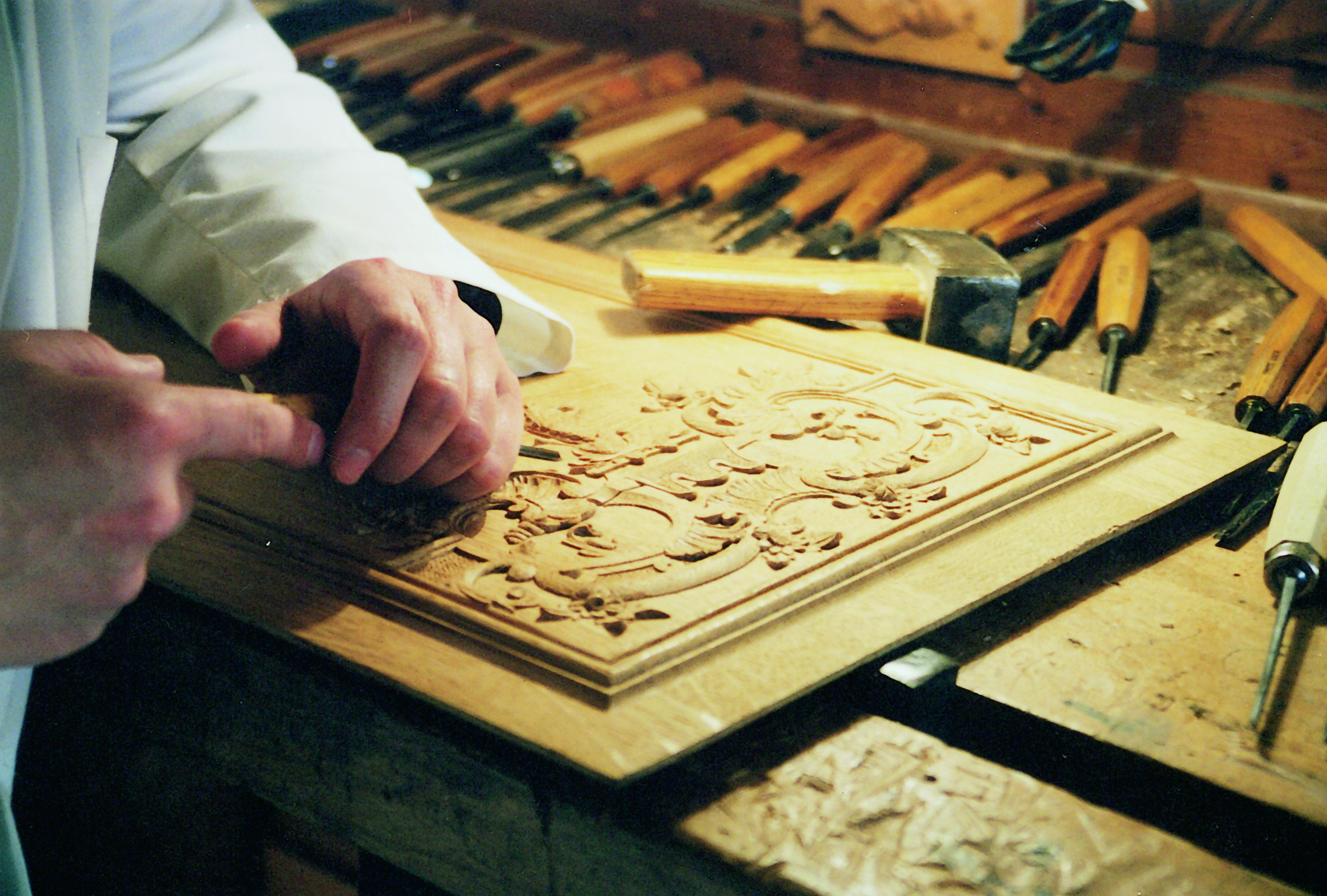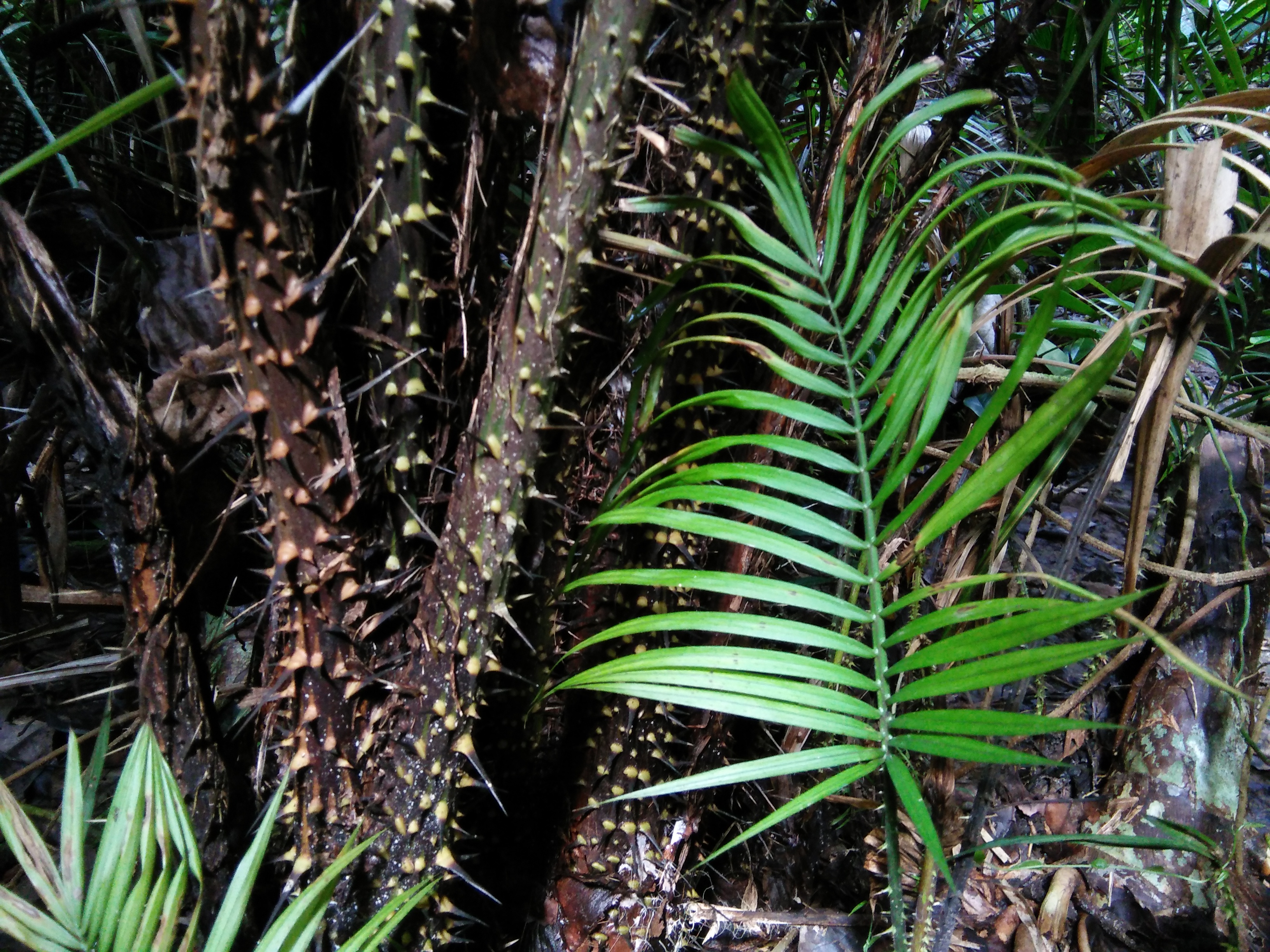|
Shippei
A is a bamboo staff which curves slightly, approximately 15 inches (or half a metreKoun, 205-206) long, which is used as a "symbol of a Zen master's authority" in Zen Buddhism.Baroni, 300 In contrast to the ''keisaku'', the shippei was often used as a disciplinary measure for meditating monks. It can often be found at the side of a Zen master in a zendo and is also "one of seven items that make up a Zen monk's equipment." It is fashioned out of two pieces of bamboo that are shaped into the form of a spatula (or short bow), wound with rattan, and lacquered. Sometimes curved in the shape of an S, the shippei may be elaborately decorated with a silk cord or have carvings. It is still "sometimes employed to hit monks".Hori, 701-702 See also *''Keisaku In Zen Buddhism, the ''keisaku'' ( Japanese: 警策, Chinese: 香板, ''xiāng bǎn''; ''kyōsaku'' in the Soto school) is a flat wooden stick or slat used during periods of meditation to remedy sleepiness or lapses of concentr ... [...More Info...] [...Related Items...] OR: [Wikipedia] [Google] [Baidu] |
Keisaku
In Zen Buddhism, the ''keisaku'' ( Japanese: 警策, Chinese: 香板, ''xiāng bǎn''; ''kyōsaku'' in the Soto school) is a flat wooden stick or slat used during periods of meditation to remedy sleepiness or lapses of concentration. This is accomplished through a strike or series of strikes, usually administered on the meditator's back and shoulders in the muscular area between the shoulder and the spine. The keisaku itself is thin and somewhat flexible; strikes with it, though they may cause momentary sting if performed vigorously, are not injurious. See also *''Jikijitsu A (Chinese: ''chih-jih'') is the directing monk in charge of every movement of the monks coming to sit zazen in the zendo in a Japanese Zen monastery of the Rinzai School. Their position is that of head monk, and they are generally regarded as st ...'' *'' Shippei'' * Sluggard waker – a similar custom and tool used in 18th century British churches References * {{Buddhism topics Buddhist ritual impl ... [...More Info...] [...Related Items...] OR: [Wikipedia] [Google] [Baidu] |
:Category:Japanese Words And Phrases ...
{{Commons Words and phrases by language Words Words Words A word is a basic element of language that carries meaning, can be used on its own, and is uninterruptible. Despite the fact that language speakers often have an intuitive grasp of what a word is, there is no consensus among linguists on its ... [...More Info...] [...Related Items...] OR: [Wikipedia] [Google] [Baidu] |
Lacquer
Lacquer is a type of hard and usually shiny coating or finish applied to materials such as wood or metal. It is most often made from resin extracted from trees and waxes and has been in use since antiquity. Asian lacquerware, which may be called "true lacquer", are objects coated with the treated, dyed and dried sap of ''Toxicodendron vernicifluum'' or related trees, applied in several coats to a base that is usually wood. This dries to a very hard and smooth surface layer which is durable, waterproof, and attractive in feel and look. Asian lacquer is sometimes painted with pictures, inlaid with shell and other materials, or carved lacquer, carved, as well as maki-e, dusted with gold and given other further decorative treatments. In modern techniques, lacquer means a range of clear or pigmented coatings that dry by solvent evaporation to produce a hard, durable finish. The finish can be of any sheen level from ultra wikt:matte, matte to high Gloss (material appearance), glos ... [...More Info...] [...Related Items...] OR: [Wikipedia] [Google] [Baidu] |
Wood Carving
Wood carving (or woodcarving) is a form of woodworking by means of a cutting tool (knife) in one hand or a chisel by two hands or with one hand on a chisel and one hand on a mallet, resulting in a wooden figure or figurine, or in the sculpture, sculptural ornamentation of a wooden object. The phrase may also refer to the finished product, from individual sculptures to hand-worked mouldings composing part of a tracery. The making of sculpture in wood has been History of wood carving, extremely widely practised, but does not survive undamaged as well as the other main materials like Stone sculpture, stone and bronze, as it is vulnerable to decay, insect damage, and fire. Therefore, it forms an important hidden element in the art history of many cultures. Outdoor wood sculptures do not last long in most parts of the world, so it is still unknown how the totem pole tradition developed. Many of the most important sculptures of China and Japan, in particular, are in wood, and so are th ... [...More Info...] [...Related Items...] OR: [Wikipedia] [Google] [Baidu] |
Wisteria
''Wisteria'' is a genus of flowering plants in the legume family, Fabaceae (Leguminosae). The genus includes four species of woody twining vines that are native to China, Japan, Korea, Vietnam, southern Canada, the Eastern United States, and north of Iran. They were later introduced to France, Germany and various other countries in Europe. Some species are popular ornamental plants. The genus name is also used as the English name, and may then be spelt 'wistaria'. In some countries in Western and Central Europe, ''Wisteria'' is also known by a variant spelling of the genus in which species were formerly placed, ''Glycine (plant), Glycine''. Examples include the French ''glycines'', the German ''Glyzinie'', and the Polish ''glicynia''. The aquatic flowering plant commonly called wisteria or 'water wisteria' is ''Hygrophila difformis'', in the family Acanthaceae. Description Wisterias climb by twining their Plant stem, stems around any available support. ''Wisteria floribunda, W. ... [...More Info...] [...Related Items...] OR: [Wikipedia] [Google] [Baidu] |
Rattan
Rattan, also spelled ratan (from Malay language, Malay: ''rotan''), is the name for roughly 600 species of Old World climbing palms belonging to subfamily Calamoideae. The greatest diversity of rattan palm species and genera are in the closed-Canopy (biology), canopy Old-growth forest, old-growth tropical forests of Southeast Asia, though they can also be found in other parts of tropical Asia and Africa. Most rattan palms are ecologically considered lianas due to their climbing habits, unlike other palm species. A few species also have tree-like or shrub-like habits. Around 20% of rattan palm species are economically important and are traditionally used in Southeast Asia in producing wickerwork furniture, baskets, Walking stick, canes, woven mats, Rope, cordage, and other handicrafts. Rattan canes are one of the world's most valuable non-timber forest products. Some species of rattan also have edible scaly fruit and heart of palm. Despite increasing attempts in the last 30 y ... [...More Info...] [...Related Items...] OR: [Wikipedia] [Google] [Baidu] |
Bamboo
Bamboos are a diverse group of mostly evergreen perennial plant, perennial flowering plants making up the subfamily (biology), subfamily Bambusoideae of the grass family Poaceae. Giant bamboos are the largest members of the grass family, in the case of ''Dendrocalamus sinicus'' having individual stalks (Culm (botany), culms) reaching a length of , up to in thickness and a weight of up to . The internodes of bamboos can also be of great length. ''Kinabaluchloa, Kinabaluchloa wrayi'' has internodes up to in length. and ''Arthrostylidium schomburgkii'' has internodes up to in length, exceeded in length only by Cyperus papyrus, papyrus. By contrast, the stalks of the tiny bamboo Raddiella, ''Raddiella vanessiae'' of the savannas of French Guiana measure only in length by about in width. The origin of the word "bamboo" is uncertain, but it most likely comes from the Dutch language, Dutch or Portuguese language, Portuguese language, which originally borrowed it from Malay langua ... [...More Info...] [...Related Items...] OR: [Wikipedia] [Google] [Baidu] |




